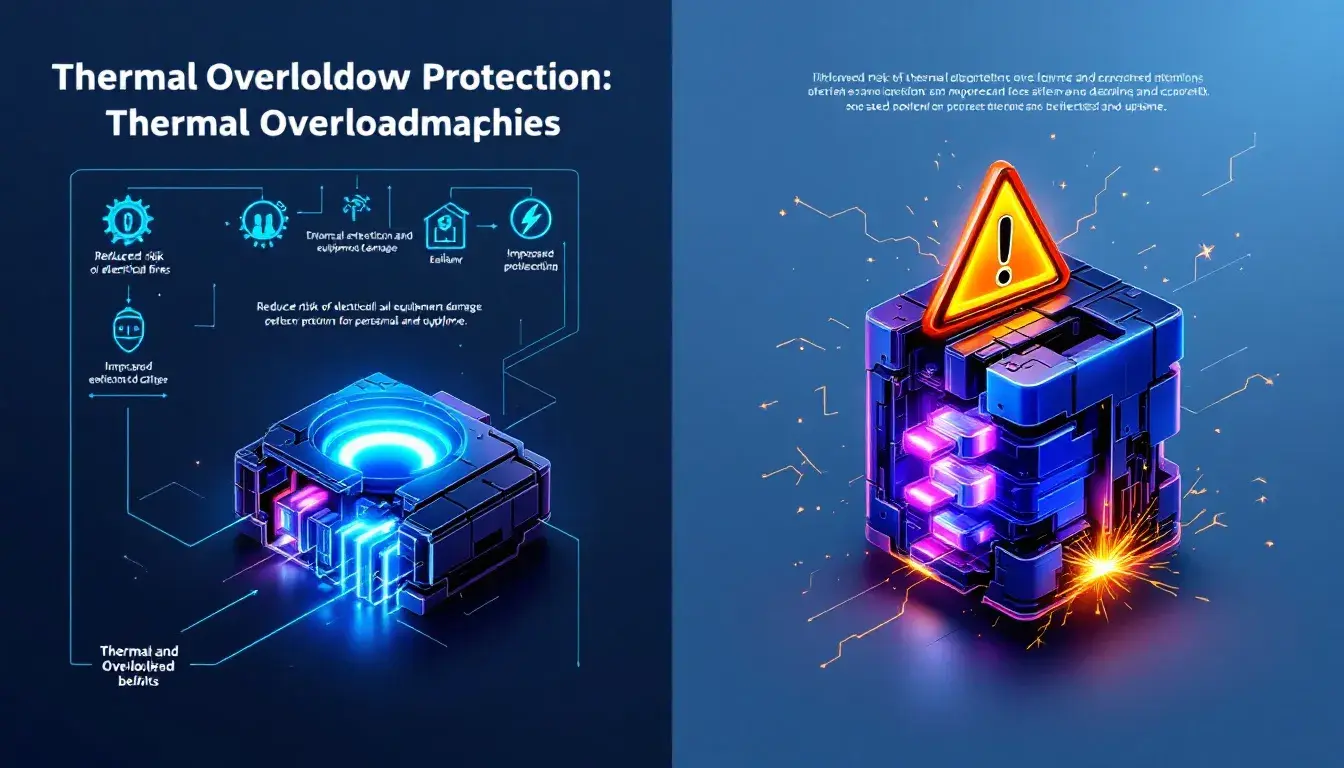Semplici linee guida per la riparazione dell'interruttore automatico
Indice dei contenuti
Attiva/disattivaLa riparazione degli interruttori automatici garantisce un sistema elettrico sicuro e funzionale riparando o sostituendo gli interruttori difettosi.
Se un interruttore automatico è rotto, potrebbe verificarsi una perdita di potenza, surriscaldamento o rischi di incendio.
Sapere come riparare o sostituire un interruttore automatico aiuta a prevenire guasti elettrici e garantisce la sicurezza.
Continua a leggere per saperne di più.
Come identificare un interruttore difettoso
Prima di effettuare una riparazione dell'interruttore automatico, verifica se l'interruttore è effettivamente difettoso. I segnali di un interruttore difettoso includono:
- Frequenti viaggi – Se il interruttori automatici anche in condizioni di carico normale potrebbe usurarsi.
- Nessun ripristino dell'alimentazione – Se il ripristino dell'interruttore non ripristina l'alimentazione, potrebbe essere difettoso.
- Danni fisici – Segni di bruciatura, plastica fusa o odore di bruciato indicano un guasto interno.
- Manico lento o rigido – Se l'interruttore è difficile da spostare o non rimane in posizione, il meccanismo dell'interruttore potrebbe essere danneggiato.
Passaggi per riparare un interruttore automatico
Passaggio 1. Spegnere l'alimentazione e garantire la sicurezza
Spegnere l'interruttore principale per evitare scosse elettriche. Utilizzare un tester di tensione per confermare che non vi sia corrente elettrica prima di lavorare sul pannello.
Fase 2. Ispezionare l'interruttore e il carico
Controllare eventuali connessioni allentate, bruciature o cavi surriscaldati. A volte, il problema non è l'interruttore, ma un circuito sovraccarico o un elettrodomestico difettoso.
Passaggio 3. Ripristinare o sostituire l'interruttore
Prova a resettare l'interruttore portandolo completamente su OFF, quindi di nuovo su ON. Se scatta di nuovo immediatamente o non si resetta, potrebbe essere necessario sostituire l'interruttore automatico.
Come faccio a sostituire un interruttore automatico difettoso?
Passaggio 1: spegnere l'alimentazione principale – Assicurarsi sempre che l'alimentazione elettrica sia completamente interrotta prima di toccare qualsiasi interruttore.
Passaggio 2: rimuovere il coperchio del pannello – Utilizzare un cacciavite per rimuovere il pannello, esponendo gli interruttori.
Passaggio 3: scollegare l'interruttore difettoso – Estrarre con cautela l’interruttore danneggiato e staccare il filo.
Fase 4: installare il nuovo interruttore – Collegare saldamente il filo al nuovo interruttore e farlo scattare in posizione.
Fase 5: riassemblare e testare – Riposizionare il coperchio del pannello, ripristinare l'alimentazione e testare il nuovo interruttore.
Errori comuni da evitare nella riparazione dell'interruttore automatico
Molte riparazioni fai da te falliscono a causa di errori comuni. Evita di usare un tipo di interruttore non corretto, poiché amperaggi non corrispondenti possono causare surriscaldamento o guasti.
La mancata verifica del sovraccarico del circuito può causare ripetuti scatti anche dopo la sostituzione dell'interruttore.
Infine, se i collegamenti non vengono fissati correttamente, i fili possono allentarsi, aumentando il rischio di incendi.
Suggerimenti per la manutenzione preventiva degli interruttori automatici
La manutenzione regolare estende la la vita dei tuoi interruttori. Controllare periodicamente la corrosione, stringere i collegamenti allentati e mantenere il pannello libero da polvere e umidità.
Se l'interruttore scatta frequentemente, valuta il carico elettrico della tua casa per evitare di sovraccaricare i circuiti.
Quando chiamare un professionista
Se l'interruttore continua a scattare, a generare scintille o a presentare danni da bruciatura, chiamare un elettricista autorizzato.
Le riparazioni fai da te sono efficaci per le sostituzioni semplici, ma i problemi elettrici più complessi richiedono la gestione da parte di esperti.
Riparazione dell'interruttore: considerazioni finali
Sapere come riparare o sostituire un interruttore automatico rotto è essenziale per mantenere un impianto elettrico sicuro.
Dare sempre priorità alla sicurezza e, quando necessario, chiedere aiuto a un professionista.
Tel: +86-577-88671000
E-mail: ceo@tosun.com
Skype: tosunelectric
WeChat: +86-139 6881 9286
WhatsApp: +86-139 0587 7291
Indirizzo: Stanza n. 1001 Wenzhou Fortune Center, Station Road, Wenzhou, Cina
RICHIEDI UN PREVENTIVO
WhatsApp us
 : +86-139 0587 7291
: +86-139 0587 7291 Inglese
Inglese Spagnolo
Spagnolo Russo
Russo Francese
Francese arabo
arabo Portoghese del Brasile
Portoghese del Brasile Ucraino
Ucraino Turco
Turco Polacco
Polacco Paesi Bassi
Paesi Bassi Italiano
Italiano Bahasa Indonesia
Bahasa Indonesia Hindi
Hindi اردو
اردو sfacciato
sfacciato Հայերեն
Հայերեն ไทย
ไทย Mongolo
Mongolo Fascino
Fascino Squalo
Squalo Ellenico
Ellenico


